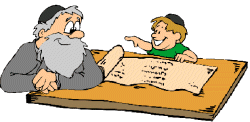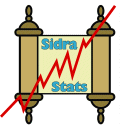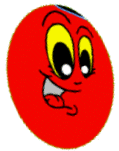Metzorah
מְּצֹרָע
Leviticus 14:1 – 15:33
Purification of a Leper
HaShem spoke to Moses, saying: This is the law concerning the leper when he is purified and placed under the jurisdiction of the priest.
The priest shall go outside the camp, where he shall examine the leper to determine that the leprous mark has healed. The priest shall then order that for the person undergoing purification there be taken two live kosher birds, a piece of cedar, some crimson wool, and a hyssop branch. The priest shall give orders that one bird be slaughtered over fresh spring water in a clay bowl. He shall then take the live bird together with the piece of cedar, the crimson wool, and the hyssop. Along with the live bird, he shall dip the other articles into the spring water mixed with the blood of the slaughtered bird. He shall then sprinkle this mixture seven times on the person undergoing purification from the leprous curse, thus rendering him clean. He shall send the living bird away toward the fields.
The person undergoing purification shall then immerse his clothing, and the priest shall shave off all the person’s hair. He shall then immerse in a mikvah and thus complete the first part of the purification process. He may return to the camp, but he must remain outside his tent for seven days. On the seventh day, the priest shall shave off all the person’s hair. His head, beard, eyebrows and other body hair must all be shaved off. He shall then immerse his clothing and body in a mikvah and he is clean.
On the eighth day, he shall take two unblemished male sheep, one unblemished yearling female sheep, three-tenths of an ephah of the best grade wheat flour mixed with oil as a meal offering, and one log of olive oil. The priest tending to the purification process shall stand all these items and the person undergoing purification before HaShem at the Communion Tent entrance.
The priest shall take one male sheep and present it as a guilt offering along with the log of oil. He shall wave them in the manner prescribed for a wave offering before HaShem. He shall then slaughter the sheep in the same place where burnt offerings and sin offerings are slaughtered, in a holy place. This guilt offering is holy of holies, and it is just like a sin offering to the priest. The priest shall take some of the guilt offering’s blood and place it on the right ear lobe, right thumb, and right big toe of the person undergoing purification. The priest shall take some of the log of oil and pour it into the palm of another priest’s hand.
This second priest shall then dip his right forefinger into the oil in his left hand, and with his finger, sprinkle some oil before HaShem seven times. The priest shall place some of the oil in his hand on the right ear, right thumb, and right big toe of the person undergoing purification, over the guilt offering’s blood. The priest shall then place the rest of the oil in his hand on the head of the person undergoing purification. In this manner, the priest shall make atonement for him before HaShem.
The priest shall then sacrifice the sin offering to remove the defilement for the person undergoing purification. After that, he shall slaughter the burnt offering, and the priest shall present the burnt offering and the meal offering on the altar. The priest shall thus make atonement for him, and the person is then ritually clean.
The Poor Leper’s Offering
If the leper is poor and cannot afford the above sacrifices, he shall take one male sheep as a guilt offering. This shall be the wave offering to atone for him. He shall also take one-tenth ephah of the best grade wheat meal mixed with oil as a meal offering, and a log of olive oil. In addition, he shall bring two turtle doves or two young common doves, as he can afford, one for a sin offering, and one for a burnt offering. On the eighth day of his purification, he shall bring them to the priest, to the Communion Tent entrance, before HaShem.
The priest shall take the guilt offering sheep and the log of oil, and wave them in the motions prescribed for a wave offering before HaShem. He shall slaughter the guilt-offering sheep. The priest shall take the blood of the guilt offering and place it on the right ear lobe, the right thumb, and the right big toe of the person undergoing purification. The priest shall then pour some of the oil onto the left hand of another priest. With his right finger, this second priest shall sprinkle some of the oil on his left hand seven times before HaShem.
The priest shall place some of the oil from his hand on the right ear lobe, right thumb, and right big toe of the person undergoing purification, right over the place where the blood of the guilt offering was put. The priest shall then place the rest of the oil that is in his hand on the head of the person undergoing purification. With all this, he shall make atonement for the person before HaShem. He shall then prepare one of the turtle doves or young common doves that the person was able to afford.
Taking this offering that the person could afford, the priest shall sacrifice one bird as a sin offering and one as a meal offering, and then present the meal offering. The priest shall thus make atonement before HaShem for the person undergoing purification.
The above is the entire law concerning the person who has the mark of the leprous curse on him, and who cannot afford more for his purification.
Discoloration in Houses
HaShem spoke to Moses and Aaron, saying: When you come to the land of Canaan, which I am giving to you as an inheritance, I will place the mark of the leprous curse in houses in the land you inherit. The owner of the house shall come and tell the priest, “It looks to me as if there is something like a leprous mark in the house.” The priest shall give orders that the house be emptied out before any priest comes to see the mark so that everything in the house will not become unclean. Only then shall a priest come to see the house. He shall examine the mark to determine if the mark on the wall of the house consists of penetrating streaks that are bright green or bright red, which appear to be below the surface of the wall. If they are, the priest shall leave the house and stand just outside the entrance of the house. The priest shall then quarantine the house for seven days.
On the seventh day, he shall return and examine it to determine whether or not the mark has expanded on the wall of the house. If it has, the priest shall give orders that people remove the stones having the mark, and that they throw the stones outside the city in an unclean place. He shall then have the inside of the house scraped off all around the mark, and the people doing it shall discard the removed dust outside the city in an unclean place.
The people shall take other stones to replace the removed stones. The owner shall then plaster the entire house with new clay. If, after the stones have been removed and the house has been scraped and replastered, the mark comes back the priest shall return and examine it. If the mark has spread in the house again, it is a malignant leprous mark which is unclean. The priest must order that the house be demolished, and its stones, wood, and all the clay from the house shall be brought outside the city to an unclean place.
As long as the house is in quarantine, anyone entering it shall be unclean until evening. If one remains in the house long enough to relax, he must immerse both his body and his clothing. However, he must immerse his clothing only if he has remained in the house long enough to eat a small meal. However, if the priest returns at the end of the seven days after the house has been replastered, and he sees that the mark has not reappeared in the house, then the mark has gone away and the priest shall declare the house clean.
To purify the house, he shall order two birds, a piece of cedar, some crimson wool, and a hyssop branch. He shall slaughter one bird over fresh spring water in a clay bowl. He shall then take the piece of cedar, the hyssop, the crimson wool, and the live bird, dip them in the blood of the slaughtered bird and fresh spring water, and sprinkle it on the house seven times. Thus, with the bird’s blood and spring water, along with the live bird, cedar wood, hyssop, and crimson wool, he shall purify the house.
He shall then send the live bird outside the city toward the fields. In this manner, he shall make atonement for the house, and it is then clean. The above is the entire law for every leprous mark, bald patch, leprous mark in a garment or house, and white blotch, discoloration, or spot on the skin so that decisions can be rendered as to the day one is rendered clean and the day one is rendered unclean. This is the entire law concerning the leprous curse.
Haftarah Connection

II Kings 7.3-20
This week’s Parsha talks about tzara’at, the different types of tzara’at that there are, and how to purify it.
The Haftarah begins with “There were four men with tzara’at”. They entered the camp of the enemy of Israel and it was deserted. They reported back and helped Israel in its time of conflict.
Sidra Stats

- Twenty-eighth of 54 Sedras in the Torah
- Written on 159 lines in the Sefer Torah
- 90 P’sukim (verses)
- 1,274 words
- 4,697 letters
Next week’s Parashat: Acharey Moth


